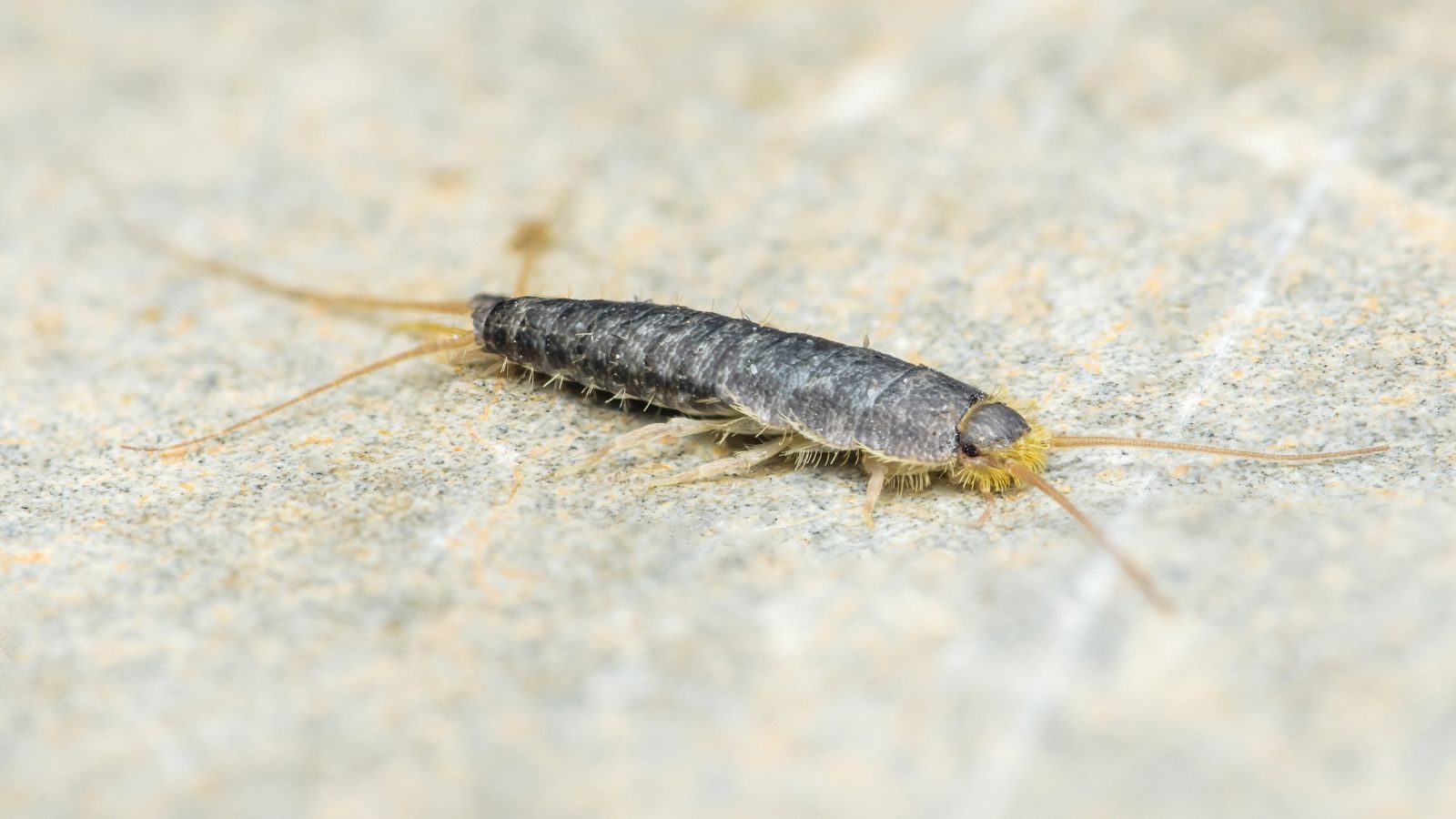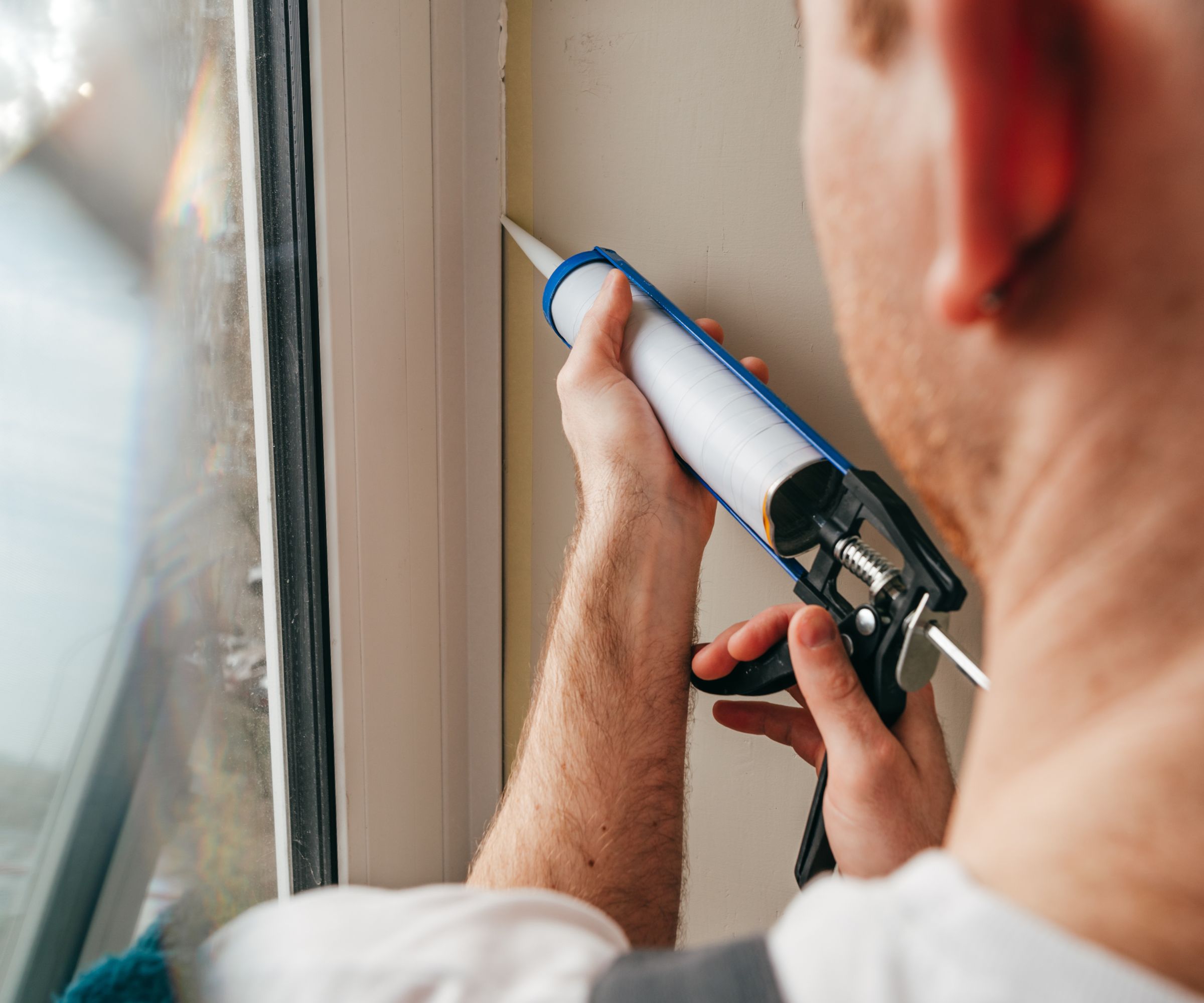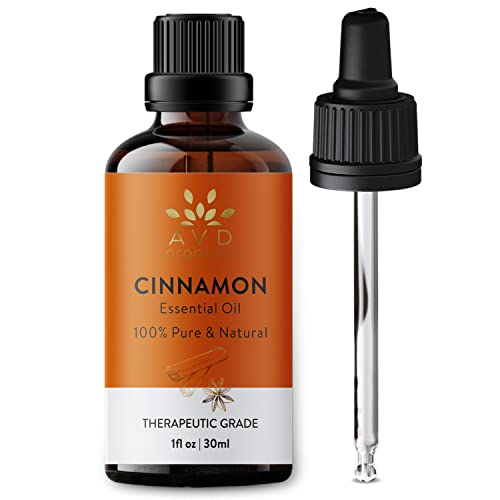The pantry staple that will stop this bathroom pest in its slithery tracks
Want to know how to kill silverfish? Experts share the natural remedies, prevention strategies and professional treatments that really work against these persistent bathroom pests

They might be small, but silverfish can cause big irritation if they make their way into your home. These fast-moving, silvery-grey insects are drawn to damp, dark places like bathrooms, kitchens and basements, where they feed on paper, wallpaper paste, clothing and even food packaging.
If left unchecked, these creepy-crawlies can leave behind tell-tale holes, yellow stains and droppings – damaging treasured belongings and making your home feel less than fresh in the process.
The good news? There are plenty of effective ways to kill silverfish or stop them entering your home in the first place. From natural remedies – including one surprising pantry staple you probably already have in your kitchen – to expert-approved prevention strategies, it’s possible to get rid of silverfish and keep them coming back.
What are silverfish and why do they appear?

Silverfish are easy to recognise once you know what you’re looking for. Around 1–2cm long, these tiny insects have a flattened, teardrop-shaped body that shimmers with silvery-grey scales. They move quickly with a wriggling, fish-like motion, often darting out of sight when disturbed (which can make them seem even more unsettling when you spot them at home).
“I find them in laundry rooms, kitchens, bathrooms, attics, and basements, wherever the humidity level is 50% or more,” explains Tony King, pest control expert at The Pied Piper. “They'll feed on starchy materials like the glue in book binding, cardboard, wallpaper glue, and even staple foods like cereal or flour, so cluttered storage areas become a banquet for them. If one spots silverfish, it typically means there is a hidden moisture problem, e.g., a concealed water leak, poor ventilation, or too high humidity that isn't being controlled.”
Bathrooms, in particular, are a common hiding place. Andy Ellis, bathroom expert at Vidalux, explains: “The silver-scaled bugs are one of the most frustrating problems to deal with in bathrooms. While they’re generally harmless, the critters don’t just appear once and never again, they like to come and go the moment they sniff out any dampness in a home.
“They also favour coming in houses during winter as many homes will have higher humidity levels from the heating being turned on and the cold from outside causing condensation on the windows.”
Bring your dream home to life with expert advice, how to guides and design inspiration. Sign up for our newsletter and get two free tickets to a Homebuilding & Renovating Show near you.

Tony King, the owner and manager of The Pied Piper, a leading pest control service with a legacy spanning over 25 years. He leads a highly skilled team of pest exterminators proficient in handling everything from rat and mouse removal to tackling severe bedbug and cockroach infestations.
How to get rid of silverfish

There are plenty of approaches that can get rid of silverfish. Many rely on strong scents or natural powders that disrupt the pests’ usual hiding spots and feeding habits, but there are also several preventative methods to try out too.
1. Use cinnamon to deter silverfish
“Silverfish hate the smell of cinnamon,” explains Tony King. “Placing cinnamon sticks or powder in problem areas like bathrooms and cupboards can be a simple way to discourage them from settling in.”
James Roberts, director of Sanctuary Bathrooms, suggests a couple of easy ways to put this unexpected ingredient into practice:
1. Sprinkle ground cinnamon – dust a little powder in corners, under sinks and near drains to deter silverfish.
2. Use a cinnamon essential oil – for a stronger effect, place a few drops of oil on a cotton ball and leave it in high-risk areas such as cupboards or behind the toilet.
The strong scent masks food sources and disrupts silverfish behaviour, making your home far less inviting for them. For best results, refresh cinnamon powder every week or two and reapply essential oils as the fragrance fades.
2. Try other naturally repellent scents
Silverfish have sensitive antennae and are easily put off by strong smells, which makes certain scents a handy deterrent. Lavender, cedarwood, citrus and even bay leaves can all help make your bathroom and kitchen less appealing to these pests.
Andy Ellis, bathroom expert at Vidalux, suggests a simple DIY method: “Pour some lavender oil onto cotton pads and dab the sink, shower drain and even the toilet to prevent silverfish. The critters can’t stand the scent and will avoid areas where it’s present.”
These natural scents work particularly well in cupboards, drawers and bathroom storage spaces. However, it’s important to understand their limits. As Tony King explains: “Natural remedies, including cedar shavings, bay leaves, and lavender oil, might deter silverfish from being in some areas but will not solve an outright infestation. I let customers know that these are great for prevention or keeping them away from stored items, but they won't solve it if you already have hundreds inside the walls.”

Andy Ellis is founder & MD of Vidalux, a leading UK shower, steam-shower and walk-in bath specialist. He has over 20 years’ experience in bathroom design, moisture control and product innovation
3. Use diatomaceous earth
Diatomaceous earth is a naturally occurring powder that is harmless to humans and pets but lethal to small insects. Sprinkled lightly along skirting boards, behind appliances or in the corners of cupboards, it dehydrates silverfish on contact.
This 2kg Non-Toxic Diatomaceous Earth Powder from Amazon UK is highly effective against a wide range of pests, including ants, bed bugs, fleas, ticks, cockroaches, silverfish, carpet moths, beetles, and more
4. Control humidity with dehumidifiers, fix leaks, and improve ventilation
“Silverfish rely on moisture to survive, so the best way to discourage them is by keeping your home as dry as possible,” explains Sophie Thorogood, pest prevention expert at Pest-Stop. “Use dehumidifiers in damp areas and ensure proper ventilation in bathrooms and kitchens. Small actions, like running a bathroom extractor fan while showering, can also make a big difference.”
You should make sure to repair leaking pipes, dripping taps, or cracks in walls and ceilings that might allow moisture to build up. “Properly insulating your home and investing in damp-proofing measures will also help limit their hiding spots,” adds Sophie.

Sophie Thorogood is Technical Training Manager at Pelsis, with a background in biology and entomology. She designs and delivers training programmes, leads technical expertise in pest control, and emphasises moisture mitigation and prevention best-practices.
5. Seal cracks and entry points

Even if you’ve tackled humidity, silverfish can still find their way inside through the smallest of openings.
“Silverfish are naturally attracted to rooms which have high humidity, which is why it’s important to have all vents fixed to prevent the likelihood of them popping up,” explains Andy Ellis.
Sophie Thorogood adds: “Even tiny cracks can be a gateway for these pests, so it’s worth doing a thorough check of your home’s exterior. Sealing gaps around windows, doors and skirting boards is a simple but effective step.”
To get started, walk around your home and check for loose sealant, worn caulking or gaps where old pipework meets new. Using silicone caulk or weather stripping can make a big difference, especially in older properties or during renovations, where small openings are more common.
6. Declutter and clean regularly
Silverfish love dark, undisturbed places where moisture and food sources build up. That means cluttered cupboards, piles of paper, and damp corners are all prime hiding spots. Regular cleaning and tidying is one of the simplest ways to keep these creepy-crawlies under control.
Andy Ellis explains: “Dark corners and behind radiators where wet towels are hung up are potential places for silverfish to hide. It’s important to clean the areas often so you can spot the problem as quickly as possible."
“Don’t be surprised if you find silverfish in your bathroom and kitchen sinks as they’re known to crawl up the pipes to find damp areas in a home,” adds Andy. “Clean the sink with bleach and wash it down with boiling water to prevent them from appearing.”
Bathroom towels and accessories can harbour damp too. “Every so often hang up bathroom mats to air out. If they’re left on the ground it can create an area of dampness which welcomes the spawn of silverfish."
Extra tip: As well as cleaning, proper storage is key. Keep dry foods like flour, cereals and pet food in airtight containers, and avoid leaving cardboard boxes or paper piles on the floor.
7. Call in professional pest control
If silverfish keep returning despite your best efforts, or you’re dealing with a heavy infestation, it may be time to bring in professional help.
Tony King explains: “Do-it-yourself measures like sprinkling diatomaceous earth at baseboards, using sticky traps, or vacuuming frequently can lower their numbers if you catch the problem early, but silverfish hide deep in wall voids, behind floors, and in insulation, so commercial sprays usually only kill the ones you see. With severe infestations, I recommend professional treatment with residual insecticides like borate dust or pyrethroid-based sprays that can be sprayed into cracks, crevices, and voids.”
“Professional chemical treatments, when used by qualified pest control professionals, are much more reliable because they target the insects where they breed and kill off the egg cycle. For individuals who are worried about exposure to chemicals, low-toxicity chemicals like boric acid dust are effective and safe if applied as directed.”
FAQs
Do silverfish mean your house is dirty?
No, not at all. According to Tony King, owner of The Pied Piper pest control: “It's a popular myth that silverfish are a sign of poor hygiene, which is simply not the case. I've had immaculate homes infested because they were too humid. People also get rid of entire libraries or closets when a professional treatment can restore them.”
However, the presence of silverfish may point to underlying humidity or damp issues that need attention. “The most effective way to get rid of silverfish is to combine moisture control with treatments that attack them,” Tony adds. “Adding that to a dehumidifier to keep the air below 50% relative humidity is the key to long-term success.”
What kills silverfish instantly?
While sprays and powders can kill silverfish on contact, they rarely reach the insects hiding deeper in walls and flooring. For small numbers, diatomaceous earth or sticky traps can be effective, but in the case of a larger infestation, professional-grade treatments are the only way to eliminate them quickly and thoroughly.
Will silverfish eventually go away on their own?
It’s unlikely. Silverfish are resilient, long-lived insects that can survive for months without food. Without tackling the underlying issues of moisture, clutter and blocking entry points, they will continue to return time and again – which is why prevention and treatment go hand in hand.
If you’re tackling silverfish, chances are you may have spotted other household pests too. Many of the same prevention measures — like sealing entry points and keeping clutter to a minimum — will also help you get rid of spiders and other unwanted guests. A clean, dry, well-sealed home is far less appealing to all kinds of creepy-crawlies.

Gabriella is an interiors journalist and has a wealth of experience creating interiors and renovation content. She was Homebuilding & Renovating's former Assistant Editor as well as the former Head of Solved at sister brand Homes & Gardens, where she wrote and edited content addressing key renovation, DIY and interior questions.
She’s spent the past decade crafting copy for interiors publications, award-winning architects, and leading UK homeware brands. She also served as the Content Manager for the ethical homeware brand Nkuku.
Gabriella is a DIY enthusiast and a lover of all things interior design. She has a particular passion for historic buildings and listed properties, and she is currently in the process of renovating a Grade II-listed Victorian coach house in the West Country.

